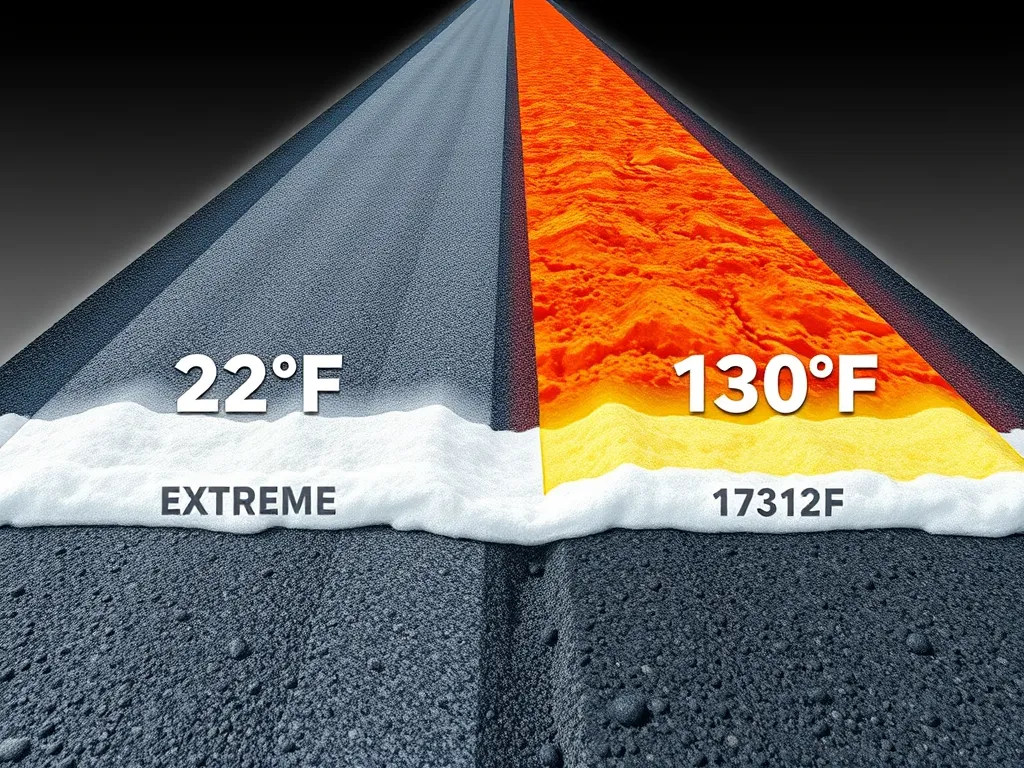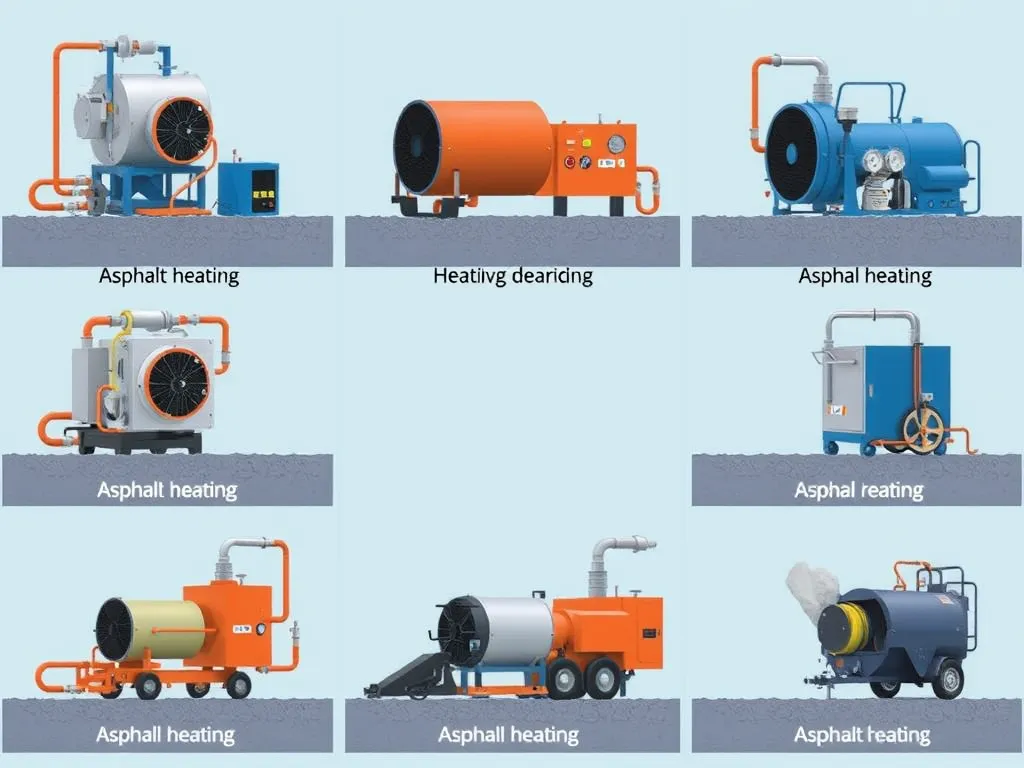Advanced Asphalt Additives for Safety: Building Roads That Protect Drivers
Published on: May 12, 2025 | Last Updated: April 14, 2025
Written By: George Voss
Advanced asphalt additives for safety are specialized materials mixed into asphalt to boost road performance and reduce driving risks. Unlike standard additives, these focus on safety features: improving skid resistance, preventing moisture damage, and maintaining strength in extreme heat or cold. Key types include polymer modifiers (like SBS or latex), anti-strip agents (amines or lime), warm-mix additives (waxes or surfactants), and asphalt rejuvenators. Manufacturers like Dow Chemical, BASF, and ArrMaz offer products meeting ASTM standards or PG binder grades (e.g., PG 76-22) for specific climates.
This article breaks down how these additives work, their safety benefits, and how to choose them. You’ll learn about warm-mix asphalt’s 50–100°F temperature drop during production, anti-strip additives’ role in wet-weather traction, and polymer blends that cut cracking by up to 40%. We’ll also cover cost comparisons, mixing tips, and eco-friendly options like recycled rubber-modified asphalt.
Role Of Asphalt Additives in Pavement Safety
Advanced asphalt additives transform standard pavements into high-performance surfaces designed to protect drivers. These materials tackle specific risks like hydroplaning, cracking, and aggregate loss—all critical factors in road safety outcomes.
Enhancing Road Surface Performance
Modern additives optimize asphalt mixtures by adjusting physical and chemical properties. This creates roads that adapt to weather extremes, heavy traffic loads, and long-term wear without compromising structural integrity.
Improving Skid Resistance and Friction
Aggregates coated with polymer-modified binders or calcined bauxite additives increase surface texture depth by up to 40%. This boosts tire grip, particularly in wet conditions. Steel slag additives—with their angular shape and high polish resistance—maintain friction coefficients above 0.50 even after 5+ years of traffic. Such enhancements cut stopping distances by 15-20% during rain events.
Reducing Cracking and Raveling
Fiber-reinforced additives like cellulose or polyester minimize thermal cracking by dispersing stress across the pavement matrix. Rejuvenating agents containing maltenes or bio-oils penetrate aged asphalt, restoring flexibility to prevent raveling—the loss of aggregate that creates hazardous loose debris. Projects using these additives report 30% fewer cracks over a decade compared to untreated pavements.
With these performance upgrades, engineers now focus on selecting the right additive types for each project’s needs—a decision that hinges on climate, traffic patterns, and safety priorities.
Types Of Advanced Asphalt Additives
Modern asphalt additives target specific road safety challenges. These materials enhance pavement performance while addressing environmental and operational demands.
Warm-mix Asphalt (WMA) Additives
WMA additives allow asphalt production at 30-100°F lower temperatures than traditional hot-mix methods. Common options include organic waxes (Sasobit), chemical surfactants (Evotherm), and water-based foaming agents.
Properties of WMA Additives
These additives lower bitumen viscosity, improving workability at reduced heat. They maintain mix density through improved coating of aggregates.
Safety Benefits: Lower Production Temperatures
Cooler mixing cuts worker exposure to fumes by 50-70%. It reduces burn risks during transport and placement. Lower emissions (20-35% less CO₂) improve air quality near plants.
Disadvantages of Warm Mix Asphalt
Some WMA blends show 5-15% lower rut resistance in high-traffic zones. Moisture sensitivity may increase without anti-strip agents. Initial costs run $3-$6 per ton extra.
Anti-strip Additives
These liquid or powdered agents (e.g., hydrated lime, amines) combat moisture damage in asphalt layers. Critical for regions with annual rainfall exceeding 20 inches.
How Anti-Strip Additives Prevent Moisture Damage
They chemically bond to aggregate surfaces, blocking water from separating asphalt films. This maintains 90-95% coating retention after moisture exposure.
Safety Advantages in Wet Conditions
Pavements retain 30% higher skid resistance during storms. Reduces hydroplaning risks by maintaining surface texture integrity.
Asphalt Rejuvenators
Rejuvenators (often plant-based oils or low-viscosity binders) restore aged asphalt’s flexibility. Applied via spray systems or mixed into recycled pavement.
Restoring Aged Binder Properties
Replenishes maltenes lost through oxidation, returning penetration grades closer to original PG 64-22 specifications.
Extending Pavement Life for Safer Roads
Delays major cracking by 7-12 years. Maintains IRI smoothness scores below 170 inches/mile for safer vehicle control.
Polymer Additives
Styrene-butadiene-styrene (SBS) and crumb rubber modifiers boost asphalt elasticity. Used in 80% of high-stress pavements.
Enhancing Flexibility and Durability
SBS-modified binders withstand -40°F to 176°F temperatures. Increase fatigue life by 300% compared to base asphalt.
Impact on Crack Resistance and Surface Integrity
Reduces transverse cracking by 40%. Maintains 95%+ surface density under 10 million ESAL traffic loads.
Asphalt Binder Modifiers
Performance-graded (PG) binders are engineered for climate-specific needs. Common modifiers include gilsonite, polyphosphoric acid, and ground tire rubber.
Types of Modified Asphalt Binders
- PG 76-22: Withstands -22°F to 76°F ranges
- PG 88-16: For desert climates with 130°F pavement temps
- Elvaloy® Terpolymers: Chemical-resistant for industrial zones
Safety Improvements in Extreme Temperatures
Modified binders reduce thermal cracking by 60% in cold regions. Prevent rut depths exceeding 0.5” in heat waves.
With these additive technologies defined, let’s examine how they work together to create safer driving surfaces year-round.

Key Functions and Safety Benefits
Advanced asphalt additives boost road safety through targeted upgrades. These materials tackle common risks like skids, potholes, poor visibility, and cracks.
Improving Surface Texture for Vehicle Traction
Polymer-based additives and high-friction aggregates create rough surfaces. This mix boosts tire grip by up to 35%, cutting skid risks in rain or snow. Warm-mix additives help compact the mix for even texture during paving.
Minimizing Pothole Formation
Anti-strip agents bond asphalt layers to block water seepage. Fiber additives fill tiny gaps that let ice widen cracks. Roads with these additives see 50% fewer potholes in freeze-thaw zones.
Enhancing Nighttime Visibility With Reflective Properties
Glass beads or nano-reflective coatings bounce headlights back to drivers. This raises lane marker clarity by 60% in dark, wet conditions. Some additives use light-colored aggregates for all-day glare reduction.
Reducing Thermal Cracking in Cold Climates
Recycled rubber modifiers let pavements flex without breaking below 20°F. PG-graded binders with plastomers resist shrinkage stress. Tests show 70% less crack growth over five winters.
Choosing the right blend of advanced asphalt additives depends on climate, traffic, and road type. Let’s explore how to match these materials to your project’s needs.
Also See: Estimating Costs for Asphalt Projects
Considerations for Selecting Safety-focused Additives
Choosing the right safety-focused additives requires balancing technical specs, site needs, and budget limits. Not every product works for every project. Key factors include mix compatibility, proper installation, and long-term value tied to risk reduction.
Compatibility With Existing Asphalt Mixtures
Advanced asphalt additives must bond seamlessly with the original mix. Test the binder’s PG grade (e.g., PG 64-22) against polymer modifiers or rejuvenators. Aggregates with high silica content might clash with certain anti-strip agents, weakening bond strength. Lab trials using the Superpave gyratory compactor help spot issues like poor cohesion or stripping. For recycled mixes, verify detector additives won’t destabilize aged bitumen.
Application Methods for Optimal Performance
How you apply advanced asphalt technologies shapes their effectiveness. Warm-mix additives like Sasobit® require precise temperature control during mixing (250-275°F) to lower viscosity without sacrificing compaction. Spray-on anti-strip agents need uniform coverage at 0.5-1.0% by weight of binder. For field treatments, polymer-modified emulsions work best with calibrated spreaders to boost skid resistance. Skipping these steps risks uneven curing or reduced friction.
Cost Vs. Long-term Safety ROI
While advanced asphalt additives advanced materials cost 15-30% more upfront, they cut long-term risks. Polymer-modified mixes cost $5-$8 per ton extra but extend pavement life by 40%, slashing pothole repairs. Anti-strip treatments add $1.50 per square yard but lower wet-weather crash rates by 18%. Compare this to the $12,000+ per mile annual cost of filling cracks caused by raveling. Prioritize additives proven to lower liability claims or extend maintenance cycles.
With selection criteria clarified, the next step involves weighing eco-friendly options without compromising road safety.

Environmental and Supplementary Factors
Advanced asphalt additives boost road safety while tackling sustainability challenges. Mixing innovation with practicality, they cut resource use and support circular construction practices.
Reducing Energy Consumption in Production
Warm-mix asphalt (WMA) additives slash production temps by up to 50°F. Lower heating demands trim fuel needs by 20-35% compared to traditional hot-mix asphalt. This cuts CO₂ output by 30%—a win for air quality. Workers gain too, with fewer fumes at job sites. Additives like synthetic zeolites or organic waxes modify binder viscosity without high-temp blending.
| Additive Type | Temp Reduction | CO₂ Savings |
|---|---|---|
| Synthetic Zeolites | 40-50°F | 25-30% |
| Organic Waxes | 30-45°F | 20-25% |
| Chemical Surfactants | 35-50°F | 25-28% |
Recyclability Of Additive-modified Asphalt
Modern additives boost how much old asphalt can be reused. Polymer-modified mixes allow 30-50% reclaimed asphalt pavement (RAP) in new roads. Anti-strip agents help bind recycled aggregates, maintaining moisture resistance. Tests show additive-rich RAP mixes match virgin asphalt in skid resistance (SN 45-50) and rutting scores. This cuts landfill loads while keeping roads grippy during storms.
Looking beyond materials, smart additive choices shape how roads hold up against weather shifts. Up next: balancing immediate costs with lasting safety gains.
Frequently Asked Questions (FAQ)
What Are the Primary Additives Used in Asphalt for Safety?
Advanced asphalt safety additives include polymer modifiers, anti-strip agents, warm-mix additives, and rejuvenators. Each is designed to address specific performance issues such as flexibility, moisture resistance, and temperature extremes.
How Do Anti-strip Additives Improve Road Safety?
Anti-strip additives enhance road safety by preventing moisture damage, which maintains the integrity of the asphalt layer. This helps retain skid resistance during wet conditions, thereby reducing the risk of hydroplaning.
What is the Purpose Of Asphalt Rejuvenators?
Asphalt rejuvenators are used to restore the flexibility and workability of aged asphalt. By replenishing lost maltenes, they help extend the pavement’s lifespan, ensuring better performance and safety over time.
Are There Limitations to Warm-mix Asphalt Additives?
Yes, some warm-mix asphalt (WMA) additives may exhibit lower rut resistance compared to traditional hot mixes, particularly in high-traffic areas. Additionally, they often require the use of anti-strip agents to counteract increased moisture sensitivity.
How Can I Determine the Right Additives for My Project?
Selecting the appropriate advanced asphalt additives requires an understanding of your project’s specific climate, traffic patterns, and intended lifespan. Consulting with engineers and conducting compatibility tests can guide your choices for optimal safety and performance.
Are Advanced Asphalt Additives Environmentally Friendly?
Many advanced asphalt additives contribute to sustainability by reducing energy consumption during production and increasing the recyclability of asphalt mixes, thus minimizing waste and environmental impact.
How Do Advanced Asphalt Additives Impact Maintenance Costs Over Time?
While initially more expensive, advanced asphalt additives can reduce long-term maintenance costs by minimizing the frequency and extent of repairs needed due to enhanced durability and performance properties.
Can Advanced Asphalt Additives Improve Nighttime Road Safety?
Yes, certain advanced asphalt additives, such as those containing reflective properties or glass beads, can enhance nighttime visibility, making lanes and road markings clearer to drivers, which contributes to overall road safety.

Closing Thoughts
Advanced asphalt additives play a pivotal role in enhancing road safety. They improve surface performance, increase skid resistance, and minimize cracking. Each type of additive, from warm-mix asphalt to polymer modifiers, offers unique benefits that contribute to safer driving conditions. Understanding these options can help ensure better and longer-lasting road surfaces.
Additionally, careful consideration of compatibility, application methods, and cost can significantly impact long-term safety outcomes. The integration of these additives not only promotes durability and performance but also addresses environmental concerns through improved energy efficiency and recyclability.
For more insights and detailed information about asphalt materials and safety-enhancing technologies, visit Asphalt Calculator USA.


